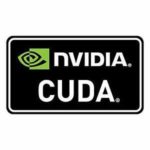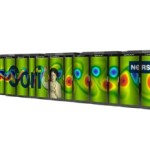Today NVIDIA released Cuda 9.2, which includes updates to libraries, a new library for accelerating custom linear-algebra algorithms, and lower kernel launch latency. “CUDA 9 is the most powerful software platform for GPU-accelerated applications. It has been built for Volta GPUs and includes faster GPU-accelerated libraries, a new programming model for flexible thread management, and improvements to the compiler and developer tools. With CUDA 9 you can speed up your applications while making them more scalable and robust.”
Berkeley Lab Tunes NWChem for Intel Xeon Phi Processor
A team of researchers at Berkeley Lab, PNNL, and Intel are working hard to make sure that computational chemists are prepared to compute efficiently on next-generation exascale machines. Recently, they achieved a milestone, successfully adding thread-level parallelism on top of MPI-level parallelism in the planewave density functional theory method within the popular software suite NWChem. “Planewave codes are useful for solution chemistry and materials science; they allow us to look at the structure, coordination, reactions and thermodynamics of complex dynamical chemical processes in solutions and on surfaces.”
Video: An Intuitive Introduction to the Fourier Transform and FFT
“The fast fourier transform (FFT) algorithm is a powerful tool for looking at time-based measurements in an interesting way, but do you understand what it does? This talk will start from basic geometry and explain what the fourier transform is, how to understand it, why it’s useful and show examples. If you’re collecting time-series data (e.g. heart rate, stock prices, server usage, temperature) the fourier transform can be a useful tool for analyzing the underlying periodic nature of the data.”
Memory-Driven Near-Data Acceleration and its Application to DOME/SKA
In this video from the 2014 HPC User Forum in Seattle, Jan van Lunteren from IBM Research Labs in Zurich presents: Memory-Driven Near-Data Acceleration.







